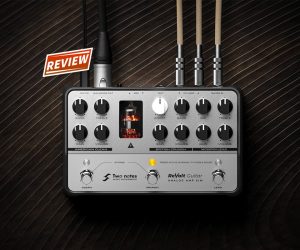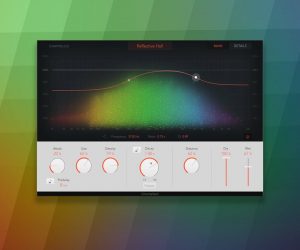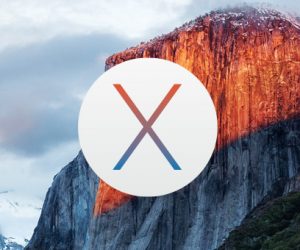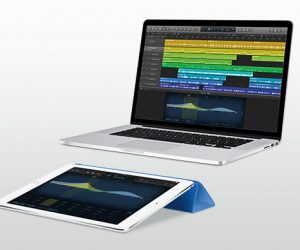
Apple Notes 122
iMac Pro — Trashcan or Treasure?
It was all the way back in 2013 when we witnessed the debut of the last Mac Pro — unaffectionately dubbed the ‘trashcan’. Apple wrongly assumed the professional market would befriend Thunderbolt connection of countless peripherals: hard drives, monitors, and indeed, audio interfaces. There’s little you can improve upon when you own the 2013 Mac Pro. You can’t replace the GPUs, and additional storage has to remain external. They’re a closed system. Consequently, disenfranchised Mac professionals devised cunning upgrades for the previous aluminium bodied Mac Pros — for machines from as far back as 2009. Unlike the 2013 trashcan model, these machines can accept faster processors, more powerful graphics cards, additional internal drives, USB 3.0 cards, and can be coerced into running Apple’s latest operating system — macOS Sierra. In short; they’re upgradable.
Apple’s blindness to the professional market has seen the Mac losing ground to Windows for the last few years. To make up some ground Apple has announced that 2018 will see the release of a new Mac Pro.
Also showing a recommitment to professionals, Apple announced an all-new iMac Pro will be available in December. It’s still a six-month wait, and with a new Mac Pro on it’s way, is it wise to jump on this new all-in-one bandwagon?
WILL IT HACK?
There’s no denying the iMac Pro’s specification is like no iMac ever before. In fact, it should be the most powerful Apple Pro computer ever. So far, we know the iMac Pro will use Xeon processors — like all Mac Pros thus far. Rumours suggest processors will be server-class LGA3647 socket processors. These will offer eight, 10, and 18-core processing.
Speaking of processors, there’s rumours of an additional ARM processor enabling higher security and Apple’s Touch I.D. system — as in the recent Touch Bar MacBook Pros. It’s worth noting that an ARM processor could appear in many future Macs as developer/beta versions of macOS High Sierra include support for an ARM processor code-named ‘Hurricane’. Like many, I’m speculating, but if next-generation macOS versions require an ARM processor alongside the main Intel i5/i7/Xeon processor, we could see the obsolescence of the Hackintosh concept.
Enough speculation, back to the iMac Pro. Standard configuration will include 32GB of 2666MHz DDR4 ECC memory. This RAM is fast, and employs error correction code (ECC). ECC RAM will detect and repair single-bit errors without stopping the OS — it’s used for mission critical server installations. You can opt to order your iMac Pro with up to 128GB of ECC RAM, but it’s going to cost. Considering the price of an 8GB ECC RAM module is around AU$120, it quickly gets close to $2000 Aussie. We know Apple adds a good markup to standard component prices, so it’ll be at least $2500.
Standard storage is a 1TB SSD, with the option to configure it with a 2 or 4TB SSD. Notice we’re getting up there in cost? A 2TB SSD will cost the best part of a grand, with a 4TB hovering around US$1600. Add the Apple markup? I’d envisage the 4TB SSD costing at least $2000 — and very likely much more.
Graphics processing has to be great for the fastest Mac ever made. The standard issue GPU is an AMD Radeon Pro Vega with 8GB of RAM. This is AMD’s latest graphics architecture offering 9677 Gigaflops (floating point operations per second). Compare this with the standard iMac with an AMD Radeon Pro 555 at 1305.6 Gigaflops, and we’re talking serious graphics rendering. You can configure a 16GB Pro Vega GPU to take those floating point calculations up to 11,059 Gigaflops. Just add another $2000.
XEON INTO THE FUTURE
So back to the business end, what’s an 18-core Xeon processor weigh in at? Bear in mind the proposed CPU will run at 4.5GHz in Turbo speed, much faster than currently available Xeons. A current 18-core Xeon running at 2.3GHz with Turbo of 3.6GHz is around AU$3600. I can imagine Apple charging at least $4500. Cooling this 18-core monster has required a redesign. Apple has employed a dual centrifugal fan system — let’s hope it’s quiet when you hit 4.5GHz.
Standard features include four Thunderbolt 3 ports, four USB 3 ports, SDXC card slot, 27-inch 5K 500-nit brightness screen and support for up to four 3840 x 2160 (4K UHD) external displays, Magic keyboard, Magic mouse and Magic trackpad (with Touch ID?), 1080p FaceTime camera, 1Gb, 2.5Gb, 5Gb and 10Gb ethernet, and it’s Space Gray — which is brilliant — if you’ve got an iMac Pro you’ll want everyone to be able to differentiate it from its non-Pro siblings.
The big question is: Is the iMac Pro destined for the recording studio? Yes and no. Sure, it’s the fastest ever Mac, with bulletproof processing RAM, and the propensity to natively process any plug-ins you care to throw at it. However I don’t think anyone using PCIe-based audio cards will find the iMac Pro a compelling proposition. Obviously the iMac Pro cannot use these cards without the added expense of a Thunderbolt expansion chassis. Equally unattractive is having a computer running fans at full tilt when the processing gets tough. Plus, if you’re really in it for the computing power, why rush into an iMac Pro in December 2017 when Apple has promised a new Mac Pro during 2018? Then there’s the cost. Once we add up the optional add-ons, such as 128GB of RAM and an 18-core processor we’re looking at a $12,000+ Aussie computer. It simply doesn’t make sense. As far as I can see the iMac Pro is a promise of what’s to come. Roll on 2018.
















RESPONSES